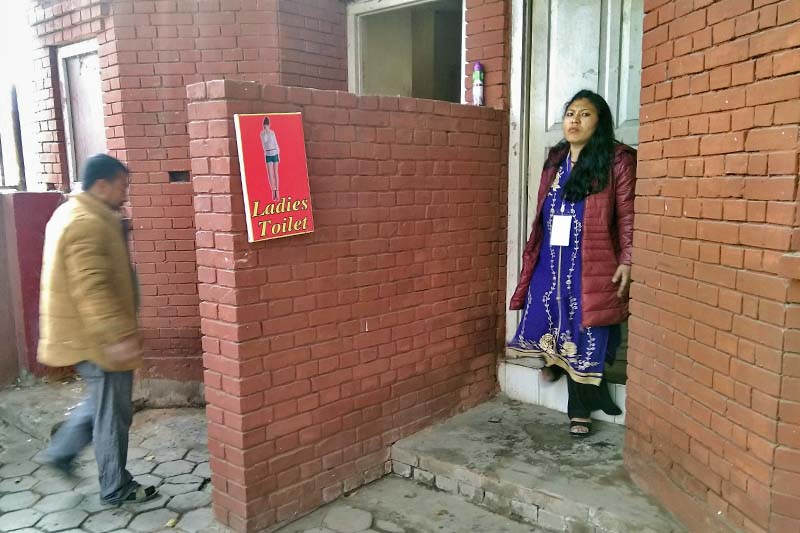Women complain of lack of toilets with proper facilities in public places
Kathmandu, March 24
Across the Valley, at malls, theaters, or stadiums, lines of women waiting outside the toilets are getting longer. Many women are blaming it on the number of toilets built for them. A quick survey shows that most of the public spaces have equal number of toilets for both men and women.
Sunita Nayaju from Bhaktapur said that she had to wait for a long time even when it was an emergency when she had menstrual cramps. “I waited for more than 15 minutes to get my turn at the restroom in Barahi Movie Hall, Bhaktapur. There are only two or three sit-down toilets available and over 10 women were standing in a queue,” said the 25-year-old.
Bearing the brunt of ill-equipped toilets in the country, women often have to hold it for a long time as they wait in queues.
Validating the need for more toilets for women, Nawa Raj Khatiwada, Associate Professor at Kathmandu University, pointed out at a study that shows that women need longer time than men in the restroom. “According to a research by Virginia Tech, USA, women take almost three minutes to go in and come out while men manage the same task in 83.6 seconds,” Dr Khatiwada said.
While number is a major issue, another complaint that is often made is on the quality of the toilets. Simran Tamang, a differently-abled student at Ratna Rajya Campus, complained about the lack of sit-down toilets in public places.“It is impossible to use the toilets outside because most of them are not disabled-friendly as they are not sit-down type. I have to rush home after class if I have to use toilets,” Tamang said.
According to the survey, 20 per cent of toilets in public places have equal proportion of facilities for male and female, 30 to 40 per cent of the toilets have functional sanitary fixtures (such as taps, urinals, doors, etc), 60 -70 per cent of the toilets have good accessibility (location, signs for male, female).
Surya Man Shakya, senior environmental engineer, said there needs to be twice the number of toilets for women in order to avoid long waiting period.






